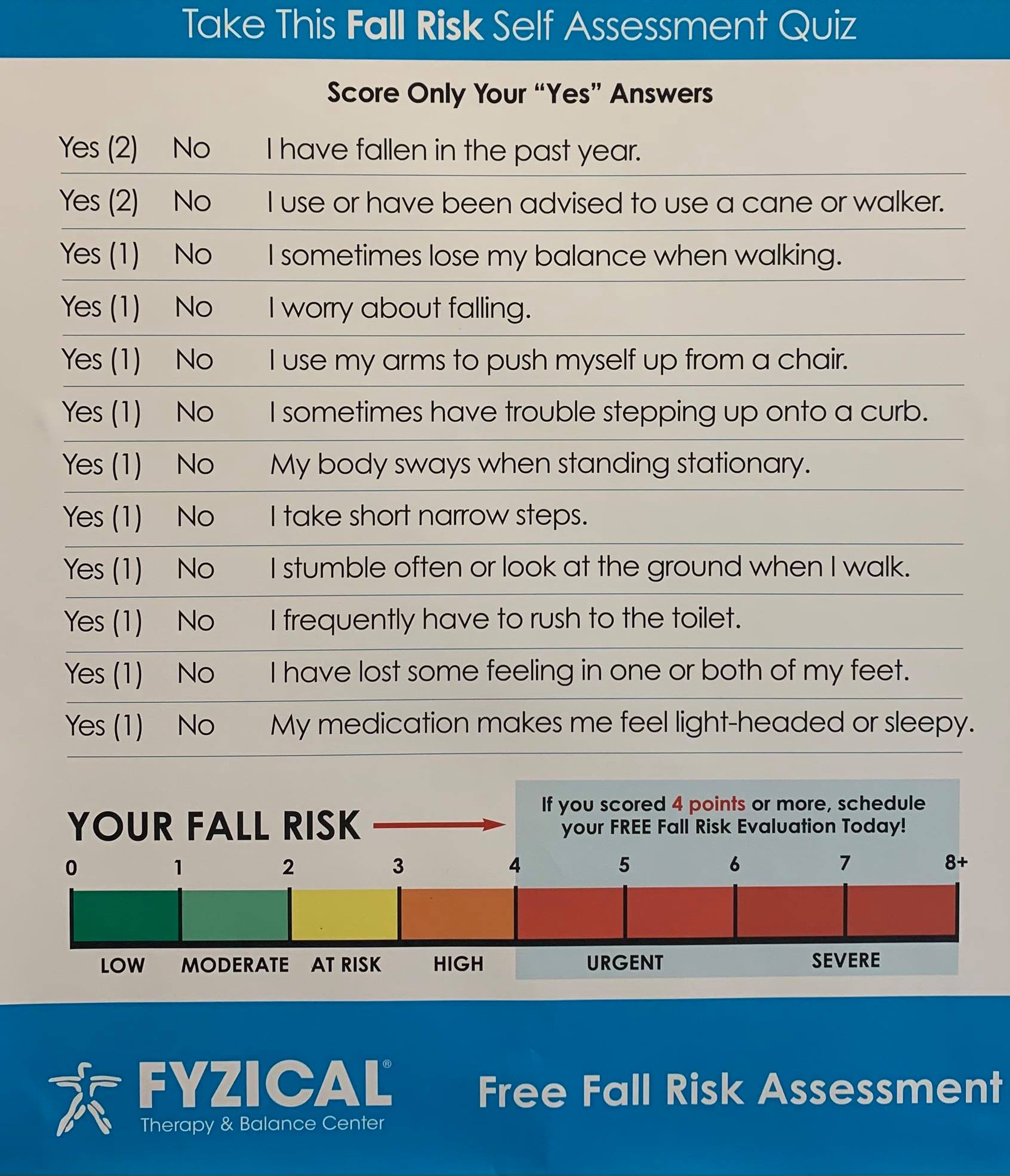The Buzz on Dementia Fall Risk
Table of ContentsRumored Buzz on Dementia Fall RiskSee This Report on Dementia Fall RiskA Biased View of Dementia Fall RiskThe smart Trick of Dementia Fall Risk That Nobody is Talking About
A loss threat analysis checks to see how most likely it is that you will drop. The analysis normally consists of: This consists of a series of inquiries about your general health and if you've had previous falls or troubles with equilibrium, standing, and/or strolling.STEADI consists of screening, evaluating, and intervention. Interventions are recommendations that may decrease your threat of dropping. STEADI consists of 3 steps: you for your risk of falling for your risk factors that can be improved to attempt to avoid drops (for instance, equilibrium issues, damaged vision) to decrease your risk of dropping by making use of efficient strategies (as an example, supplying education and resources), you may be asked several inquiries including: Have you fallen in the previous year? Do you feel unsteady when standing or walking? Are you bothered with dropping?, your provider will evaluate your stamina, balance, and stride, utilizing the complying with loss evaluation tools: This test checks your stride.
If it takes you 12 secs or more, it might imply you are at greater risk for an autumn. This test checks strength and equilibrium.
Move one foot halfway onward, so the instep is touching the big toe of your various other foot. Move one foot fully in front of the other, so the toes are touching the heel of your various other foot.
What Does Dementia Fall Risk Mean?
The majority of drops take place as an outcome of numerous contributing factors; consequently, managing the risk of falling starts with recognizing the aspects that add to drop risk - Dementia Fall Risk. Some of one of the most pertinent danger variables include: Background of prior fallsChronic clinical conditionsAcute illnessImpaired stride and equilibrium, reduced extremity weaknessCognitive impairmentChanges in visionCertain high-risk medicines and polypharmacyEnvironmental elements can additionally boost the risk for drops, including: Insufficient lightingUneven or damaged flooringWet or unsafe floorsMissing or harmed hand rails and order barsDamaged or improperly equipped devices, such as beds, mobility devices, or walkersImproper use assistive devicesInadequate guidance of the individuals living in the NF, consisting of those that show aggressive behaviorsA effective autumn threat monitoring program calls for a complete medical assessment, with input from all participants of the interdisciplinary group

The care plan should additionally include interventions that are system-based, such as those that promote a safe setting (ideal lights, hand rails, get bars, and so on). The effectiveness of the interventions need to be evaluated occasionally, and the care plan modified as needed to reflect modifications in the autumn threat assessment. Executing an autumn threat administration system utilizing evidence-based ideal technique can reduce the prevalence of drops in the NF, while limiting the possibility for fall-related injuries.
Dementia Fall Risk for Dummies
The AGS/BGS standard recommends screening all adults matured 65 years and older for loss danger every year. This screening includes asking patients whether they have fallen 2 or even more times in the previous year or looked for clinical focus for a fall, or, if they have actually not fallen, whether they really feel unsteady when strolling.
Individuals that have dropped as soon as without injury should have their balance and stride examined; those with gait or balance problems should get added analysis. A background of 1 autumn without injury and without stride or equilibrium troubles does not warrant more evaluation beyond ongoing yearly loss danger screening. Dementia Fall Risk. A loss danger analysis is needed as component of the Welcome to Medicare assessment

A Biased View of Dementia Fall Risk
Documenting a falls background is one of the high quality indications for fall prevention you can check here and management. copyright medicines in particular are independent forecasters of falls.
Postural hypotension can commonly be eased by lowering the dosage of blood pressurelowering drugs and/or stopping medicines that have orthostatic hypotension as a negative effects. Use above-the-knee support hose pipe and copulating the head of the bed boosted may likewise decrease postural decreases in high blood pressure. The advisable aspects of a fall-focused checkup are received Box 1.

A pop over to this web-site yank time higher than or equivalent to 12 secs suggests high fall threat. The 30-Second Chair Stand examination analyzes reduced extremity toughness and balance. Being not able to stand from a chair of knee elevation without using one's arms shows increased fall threat. The 4-Stage Equilibrium examination examines fixed equilibrium by having the client stand in 4 settings, each gradually much more difficult.